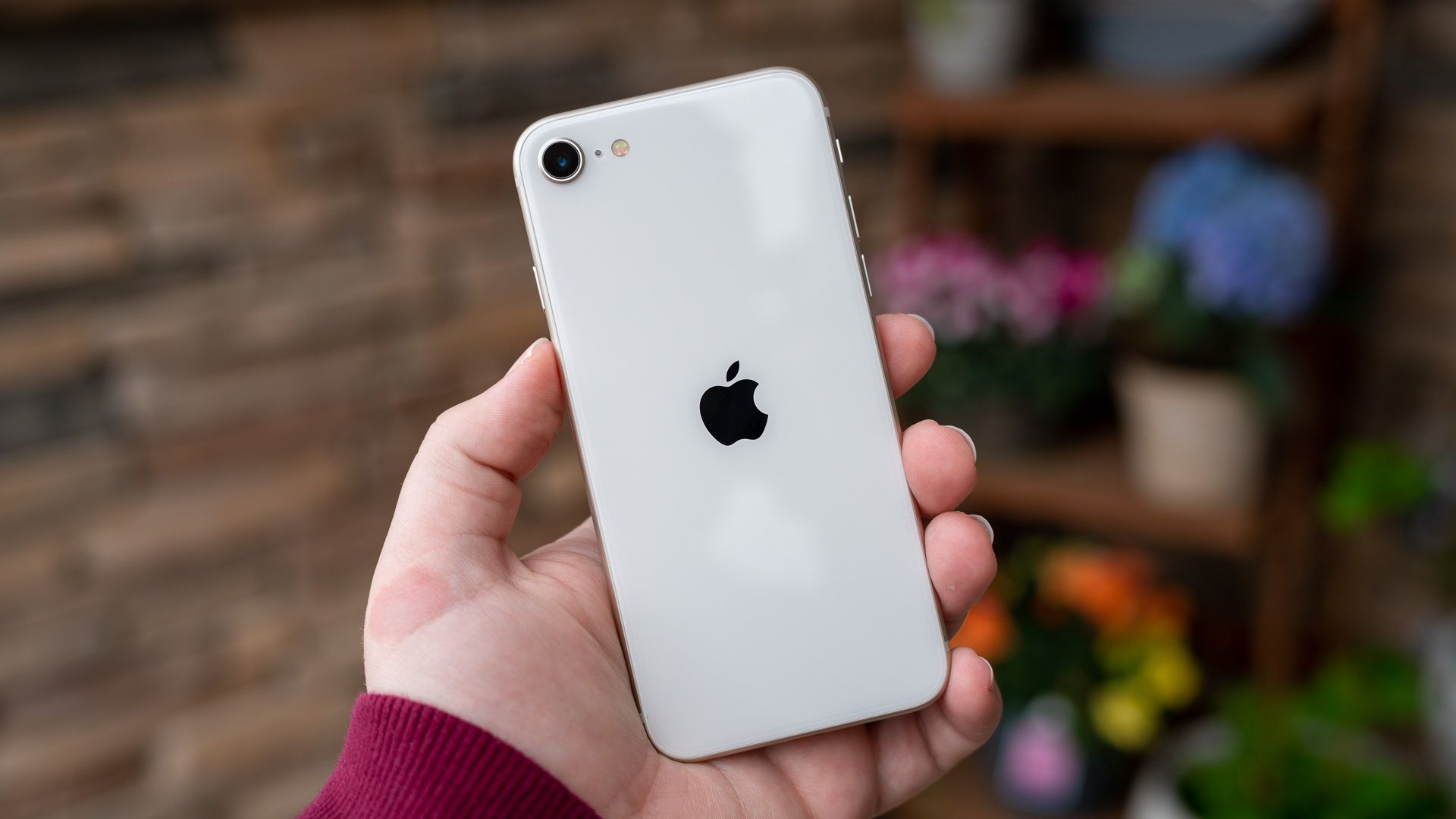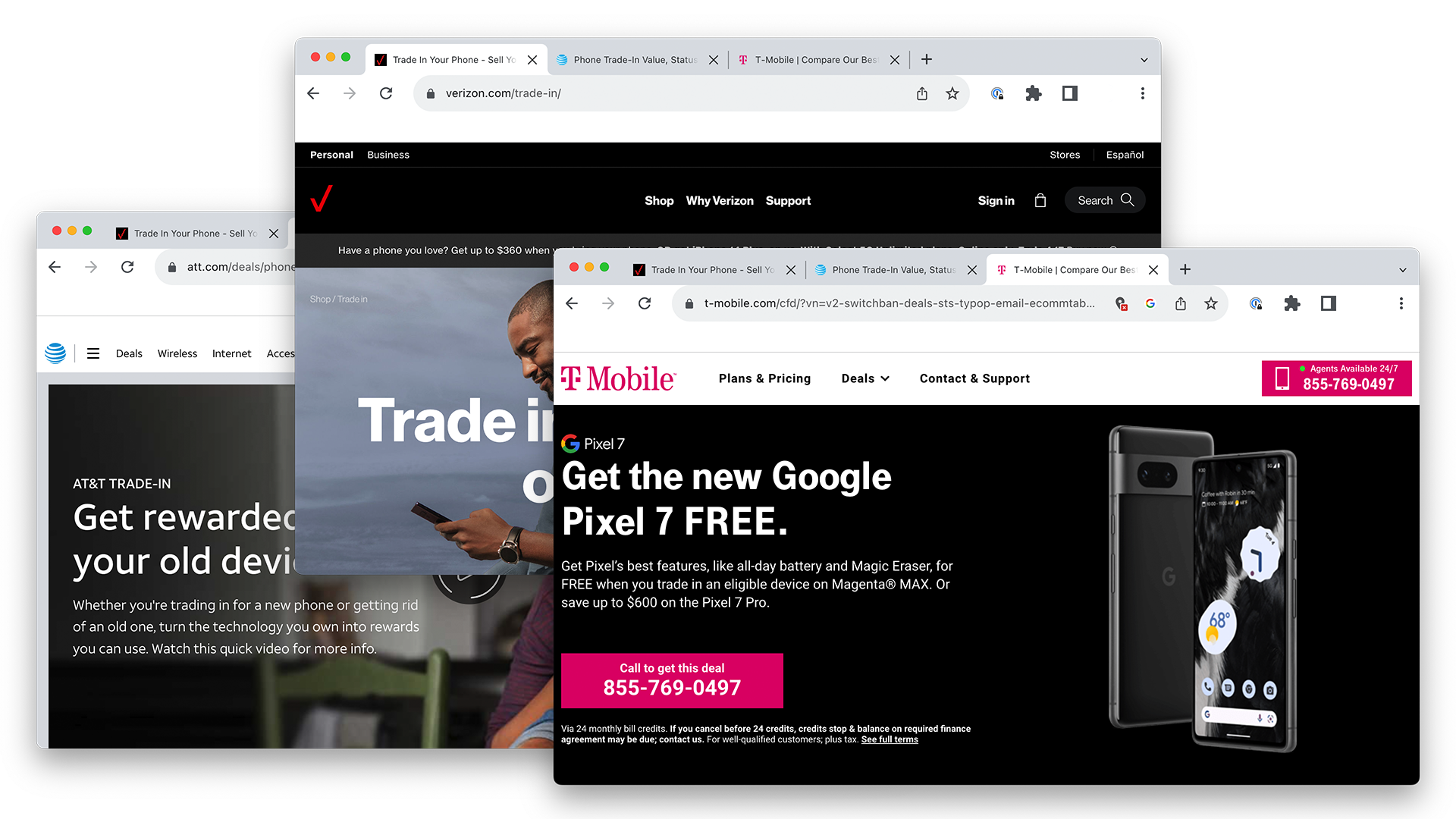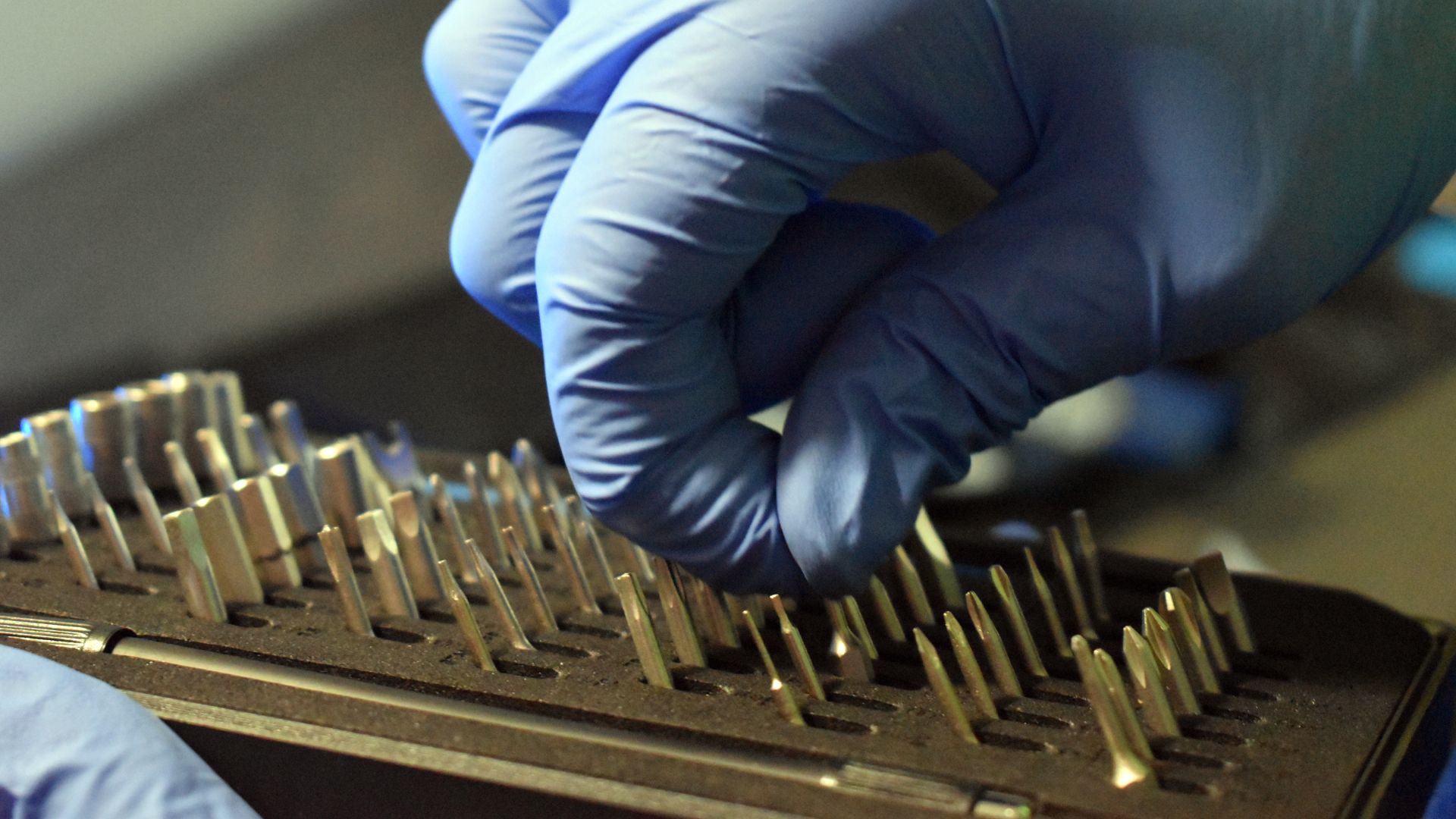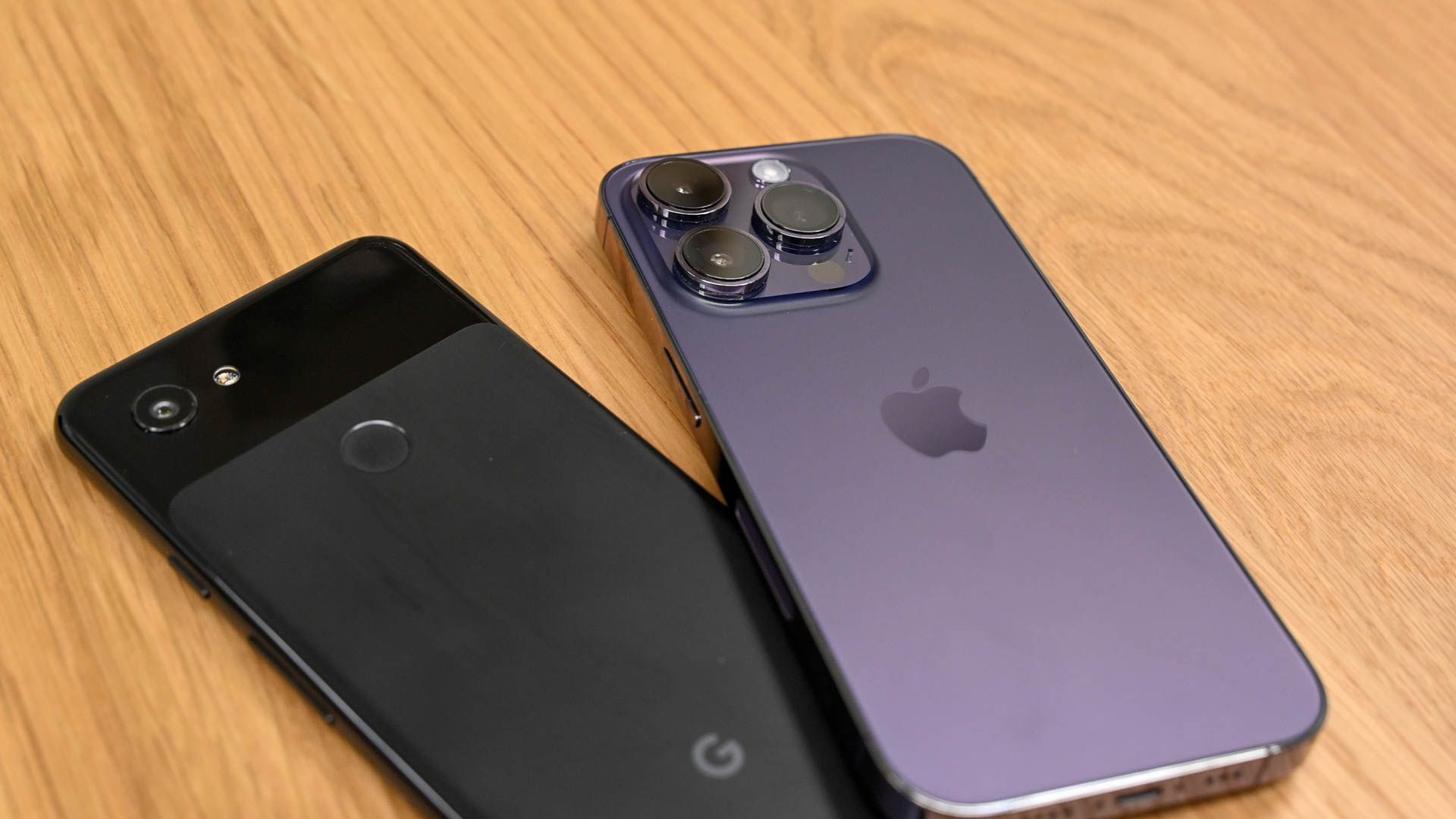Quick Links
Key Takeaways
Carriers use trade-in deals to attract new customers and keep old customers around. A carrier may also resell or recycle your old phone.
Unless you're living under a rock, you've probably seen the outrageous trade-in deals offered by carriers like Verizon, AT&T, and T-Mobile. These deals show up in TV advertisements, automated emails and text messages, and even on billboards. But why are carriers so desperate to buy your old phone?
Carriers "Overpay" for Used Phones
Let's pretend that you own an iPhone 11. You know that it's probably time for an upgrade, but you don't have enough money to buy the latest iPhone. So, you go on Facebook Marketplace and try to sell your iPhone 11---realistically, you'll only make about $200. Nobody in their right mind would pay $400 for a used iPhone 11.
But, out of the blue, your carrier sends you an email. It tells you that the latest iPhone just launched, and you'll get a $400 discount if you trade in your iPhone 11 within the next few weeks! It's a beautiful, limited-time promotion!
Carriers are happy to overpay for used phones when a flashy new device hits the market. And it doesn't take a rocket scientist to see that this is very weird---you just scored a $400 discount on a phone that's worth $1,000, and your carrier is left with a device that they could maybe sell for $200.
So, is your carrier losing money? Of course not. The average phone plan is $114 a month in the United States, according to Bureau of Labor Statistics data analyzed by WhistleOut. Anything that can keep you tethered to a carrier, including a trade-in, is profitable.
The Goal Is to Lock You In
If you've been around for a while, you know that carriers are a lot less ruthless than they used to be. The threat of regulatory intervention forced carriers to abandon several dubious practices, including anti-unlocking policies and exclusive handset agreements. Carriers have also backed away from subsidized phone plans, which made it difficult for customers to know exactly what they were paying for their device and their cellular service.
These old tricks existed for two purposes. First, they locked customers in place. If you were on a subsidized phone plan, for example, the termination fees to end your contract could cost a fortune. And due to anti-unlocking policies, you'd probably have to buy a new phone when you switched carriers.
The second purpose was to bring in new customers. Remember, the original iPhone was exclusive to AT&T. Plenty of people switched to AT&T because they wanted the iPhone, and thanks to a subsidized phone plan, they could score the exclusive device for about $125 (and spend the next two years complaining about a mysteriously inflated phone bill). Of course, most subsidized phone plans were "free upgrades," which prevented customers from switching carriers and increased their monthly bill.
But are things really that different today? I'd say that the answer is "yes," but with a caveat; the goal of locking down customers hasn't changed. Carriers simply figured out how to achieve this goal without making customers too angry.
Most people aren't dropping $1,000 in cold hard cash for a new phone. Instead, they finance the phone through their carrier. You can't leave your carrier until the debt is paid off, but you're an adult, you know exactly how much the phone costs, and you know your minimum payments---there's no subsidized nonsense here, nobody's getting a "free phone upgrade," and so on.
Trade-ins make these installment plans a lot more appealing. The idea of paying $1,000 for a smartphone, even over the span of two or three years, can be very intimidating. But $600 isn't such a big deal. Plus, the best trade-in offers are usually limited-time promotions, and by the time another promotion comes around, your old phone may be worth a lot less.
If this is starting to sound like a subsidized phone plan---yeah. Some people get trapped in an endless cycle of trade-ins. Instead of keeping a phone, paying it off, and using it until it breaks, they buy into a new installment plan every one or two years. Of course, these customers tend to stick with their carrier and their phone brand of choice. (This habit may be partially responsible for the declining popularity of budget and mid-range phones.)
Offering huge trade-in discounts has a secondary benefit; customers speak with their carrier's sales department more often. And sales representatives always press customers to upgrade their phone plan, add new lines, sign up for internet or cable service, buy a warranty, and shop for a bunch of overpriced accessories.
Even if you get a ridiculously good deal on your trade-in, your carrier isn't losing money. The whole point in the trade-in is that it's lucrative.
Also, Old Phones Are Easy to Resell
As you can probably guess, carriers don't just throw your old phone in the trash. They partner with dozens of companies that refurbish, strip, or recycle used phones. While stripping and recycling aren't very profitable (for the carrier, at least), refurbishing old phones can be a profitable venture.
Used phones are only refurbished if they can be resold. This explains why flagship devices from Apple, Samsung, and Google tend to have the largest trade-in value---they last a long time and are desirable on the secondhand market. A refurbisher will usually buy used phones from carriers like Verizon, AT&T, and T-Mobile, and resell those phones through big-box retailers or specialty stores, such as Back Market.
The Wall Street Journal found that smartphone refurbishers operate on very thin margins. A refurbisher may only make a 10% profit on a smartphone, and that's before you account for labor costs and listing fees. But the secondhand smartphone market is growing rapidly. Analyst firm IDC notes that around 282 million refurbished phone shipments were made in 2022 (an 11.5% increase over the previous year).
Of course, some devices aren't worth refurbishing or reselling. Maybe they're broken, or maybe they just don't have much value. In any case, these devices are stripped or recycled. Apple is notable in this area, as it uses special machines to disassemble used iPhones and pull out valuable resources, including a ridiculous amount of copper.
Should You Trade In Your Old Phone?
When it's time to buy a new phone, a trade-in can save you a ton of money. You could even use your trade-in to buy a high-end phone, which will last longer and retain more value than budget or mid-range models. For the most part, trade-ins are a good thing for both the customer and the carrier.
But a good discount isn't an excuse to ignore your budget. And, as a general rule, you should never buy something with credit that you can't afford with cash.
There are plenty of ways to participate in trade-ins without going beyond your means. You could trade in your device to buy last year's iPhone or Samsung Galaxy smartphone, for example. Or, you could specifically buy phones that have a long software support cycle; Apple and Samsung are the best brands for this, as they offer several years of software and security updates.
Some people love to own the latest and greatest phone---that's fine. If you want to trade in your device every year, it's your choice. Just know that you're paying a lot of money to enjoy that lifestyle.





